When I arrived in Rotterdam nearly 45 years ago, one of the things that made an impression on me was the sculpture entitled The Destroyed City by the Russian-French sculptor Ossip Zadkine depicting the bombed-out city of Rotterdam. The city had been destroyed so completely by German bombing during World War II that, except for a few buildings, almost the entire historic centre had been obliterated. The figure of a human being in anguish and pain, with an empty space where its heart would be, perfectly depicted Rotterdam. Yet I remember that I thought the sculpture was located on an empty space which had no relationship to the urban space.
So while the quality of the sculpture by Ossip Zadkine was astounding, the sculpture, I thought, did little to organise the public space around it. During the following years, as I travelled through historic cities in Europe, I perceived how sculptures and urban spaces can interact and create a powerful synergy.
When I visited Venice, while I was inspired by the streets, buildings and urban spaces in that historic city, I was particularly impressed by the two sculptures standing on columns close to the water at Piazza San Marco. They defined, in an interesting way, the space of the Piazza as it opened to the water, without cutting it off completely. Here, the sculptures, by their size and placement, worked as a spatial filter, as a window to the nature that was the raison d’etre of Venice.
I perceived how sculptures and urban spaces can interact
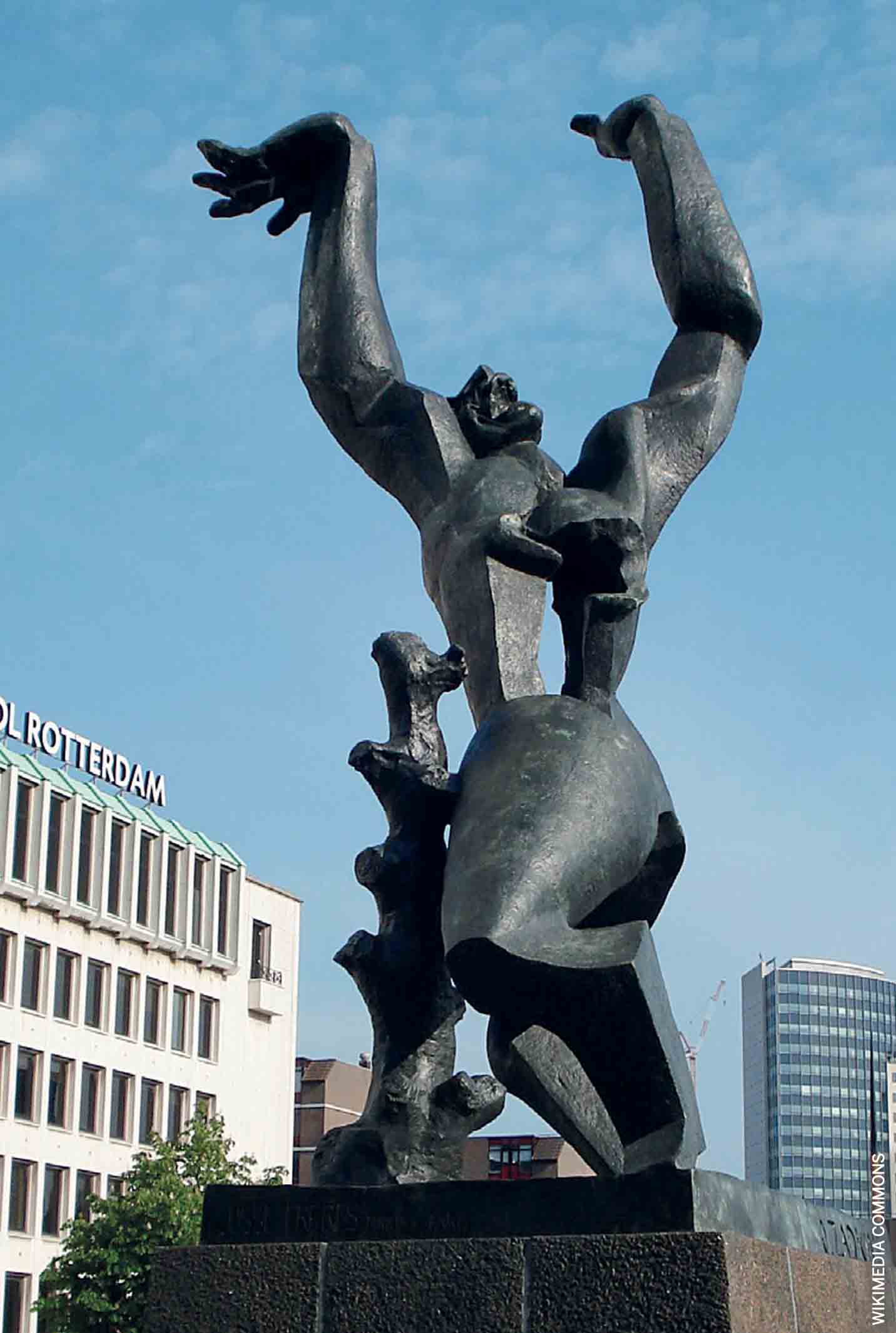
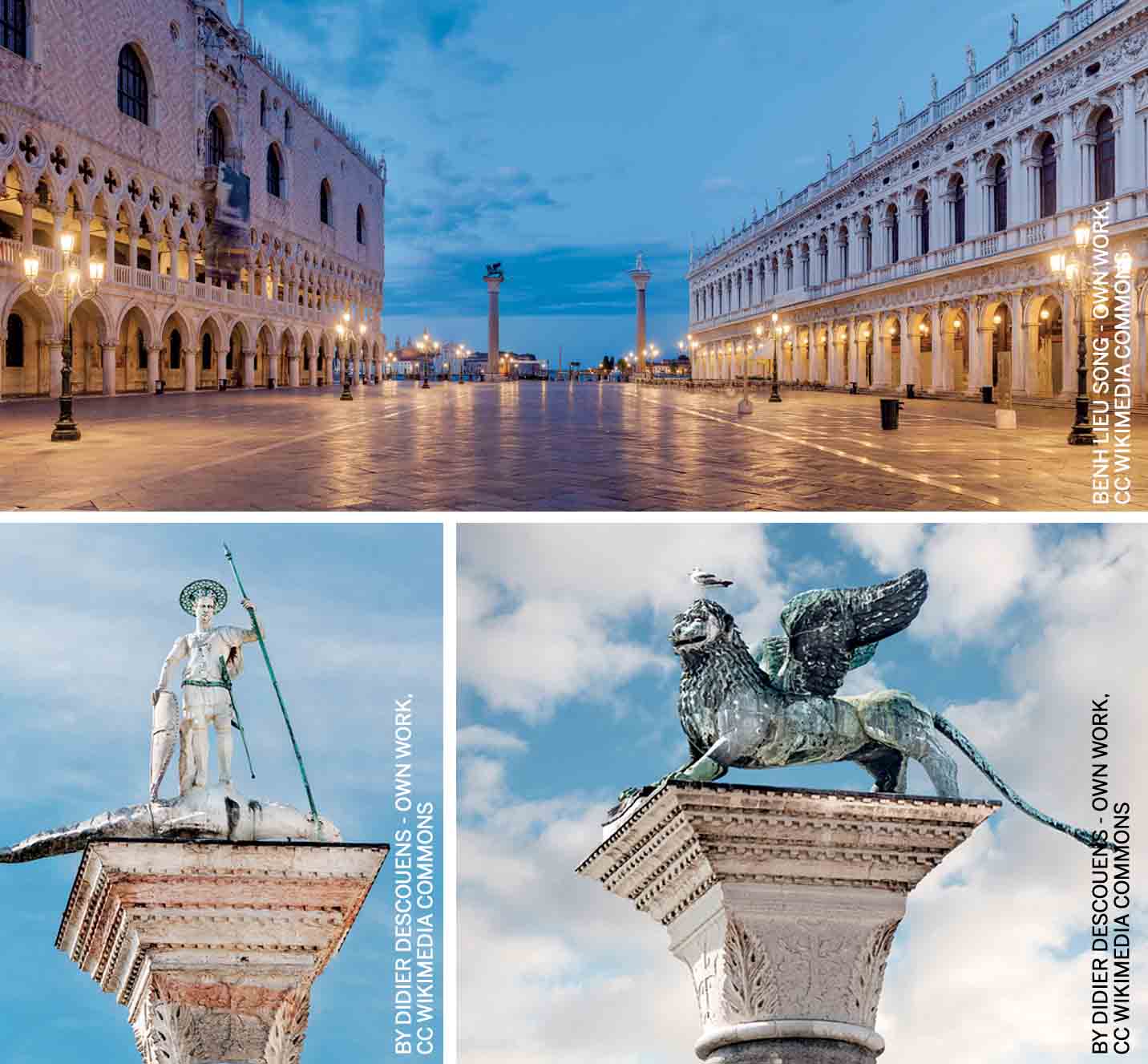
Bottom Left: St. Theodore on the western column
Bottom Right: The Lion of Venice in Piazzetta
While visiting Rome, I marvelled at how the statue of Marcus Aurelius on a horse, placed on a base, not only served as a visual focus for a beautiful urban space, but the oval form and the star-shaped paving pattern on the square and the series of steps leading to it, anchored the sculpture to the urban space and the landscape.
The examples from Venice and Rome illustrate amply how sculptures can not only be elements in themselves but, if carefully positioned in the urban space, can lead to a strong synergy within the urban context.
In his seminal book The Design of Cities, Edmund Bacon writes in detail how in the development of the urban space in front of St. Peter’s in Vatican City, the positioning and size of a sculpture (in this case, an Egyptian obelisk) was such a powerful catalyst and organising force during the following decades for the formation of the urban space as we know it today.
The two sculptures… close to the water at Piazza San Marco… by their size and placement, worked as a spatial filter
Through a series of drawings, Bacon shows how the placing of the obelisk in an unstructured space was such an important act of design and how that led, in a series of steps, to reorganisation of the urban space. Bacon writes, “The design influence of the deliberate act of Sixtus V was realised 80 years after his death, so it did not stem from any direct power he exercised during his lifetime. The point in space demarcated by the obelisk became the determinant in later construction because of the power of the idea in men’s minds, transmitted over generations by the physical fact of the obelisk’s existence.”
What the above examples show is that not only can a sculpture be a great piece of art in a city appreciated by one and all and a symbol of a city (as Ossip Zadkine’s sculpture did in Rotterdam) but, if properly designed and located, it can be a great tool in achieving greater results in urban design, such as defining spatial boundary as at Piazza San Marco in Venice, engaging with the landscape as at Campidoglio in Rome or acting as an organising force for structuring urban space through the decades, as at St.Peter’s in Rome.
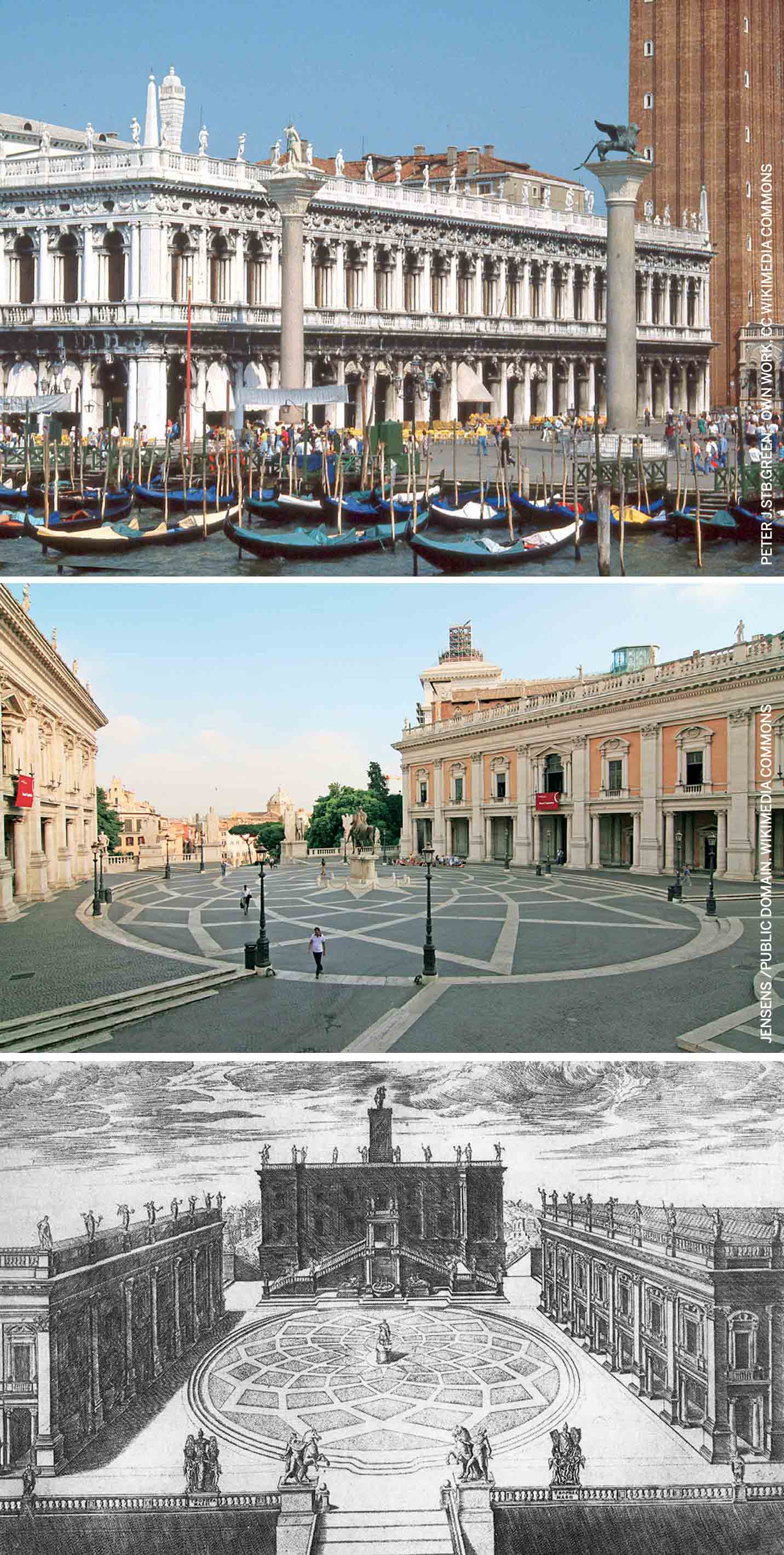
Bottom: The Campidoglio in Rome
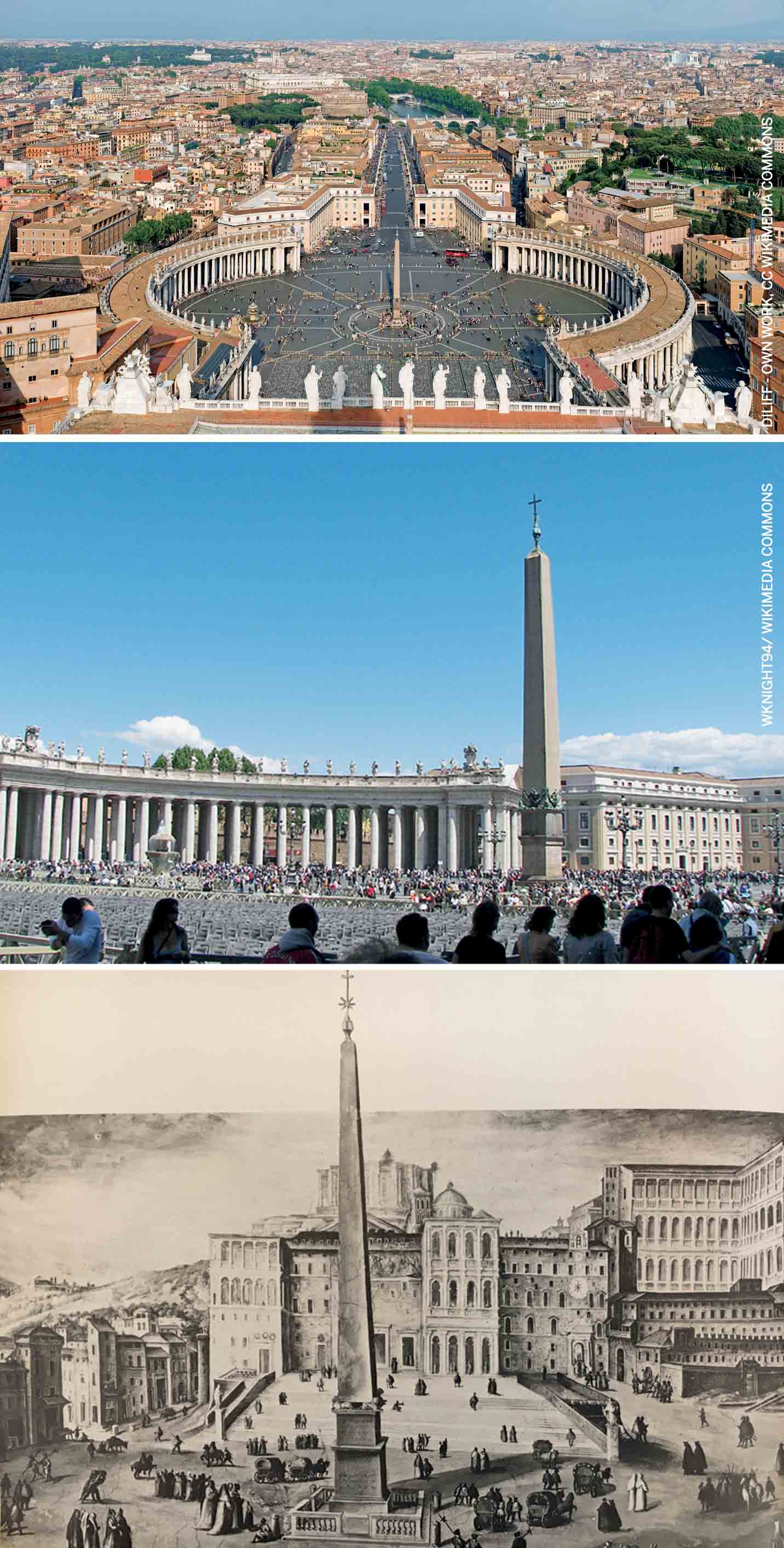
Middle: The obelisk at the centre of the great oval colonnade of Bernini, which defines this magnificent urban space
Bottom: Painting depicting the square with the obelisk in place at the time of Sixtus’s death
However, the modern generation of urban designers seem to have lost their capacity to use sculptures this way. Look at the designs of new cities and urban quarters almost in any part of the world and one must come to this sad conclusion. Is this because we train our designers to be such specialists that they are not able to see the art of urban design and city-planning and the art of sculptures as one whole?
Rethinking sculptures as part of urban space can even be done on a smaller scale as shown below.
Recently, I was able to work in the Netherlands on the design of a private landscape and its transition to a small public pond. While the garden itself was not imposing in scale (just 10 x 20 metres), the size of the adjoining pond was, in comparison, much larger, with a length of nearly 100 metres.
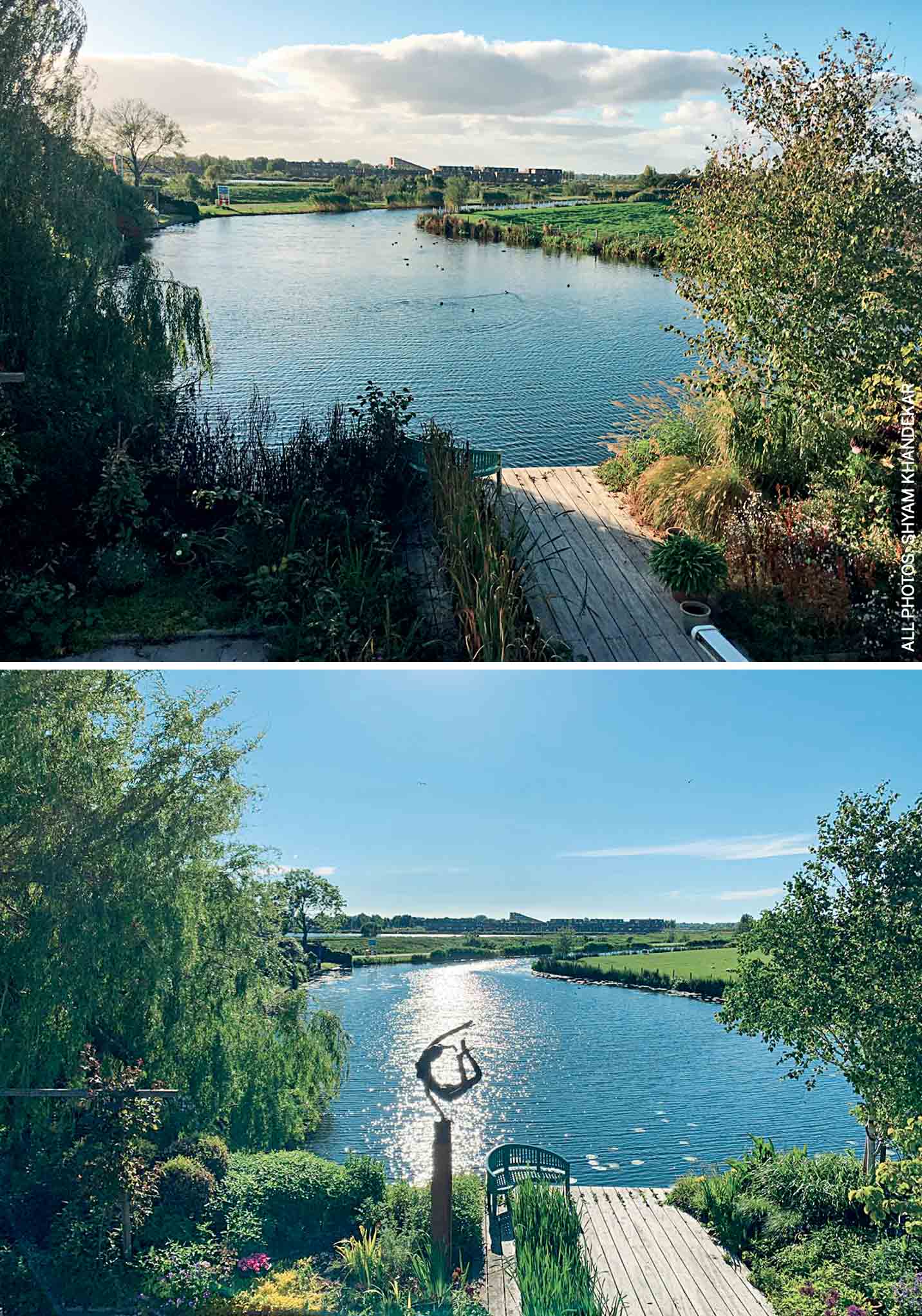
Bottom: Photos showing how K.S. Radhakrishnan’s Maiya ‘visually appropriates’ the pond and the larger landscape as part of the private garden

So I invited the well-known Indian sculptor K.S. Radhakrishnan to design a sculpture as a transitional element between the private garden and the public pond. In my invitation I also described to the sculptor the dynamic Dutch skies where the clouds are always on the move, sometimes friendly and at other times threatening. The sculpture thus also had to be placed at a height so that it could be seen against the Dutch skies, painted so effectively through centuries by Dutch painters such as in the 17th century by Jacob van Ruisdael.
The sculpture designed by Radhakrishnan – Maiya In The Sky – does all that and more!
Besides beautifully depicting a lady in free spirit, the placement of the sculpture on a column has resulted in the lake functioning almost as a background to the sculpture. Radhakrishnan’s Maiya is not only a dynamic sculpted lady but it also visually ‘appropriates’ the lake as part of the garden. The placement of the sculpture results in the pond and the garden ‘becoming one’ with each other and with the other landscape elements around the lake. With just a height of one and a half metres, Radhakrishnan’s Maiya has become the central focal point of the extensive landscape.

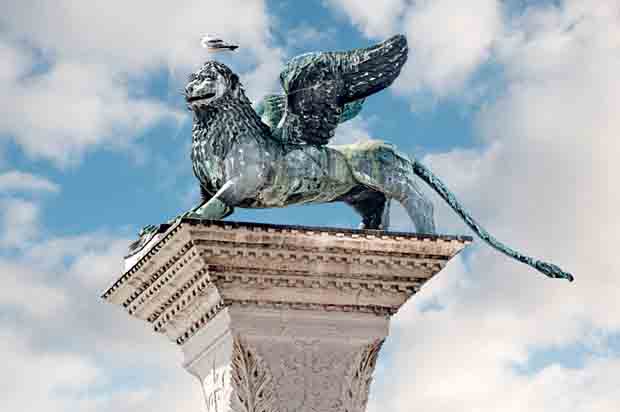

Comments (0)